Page 81 of 183
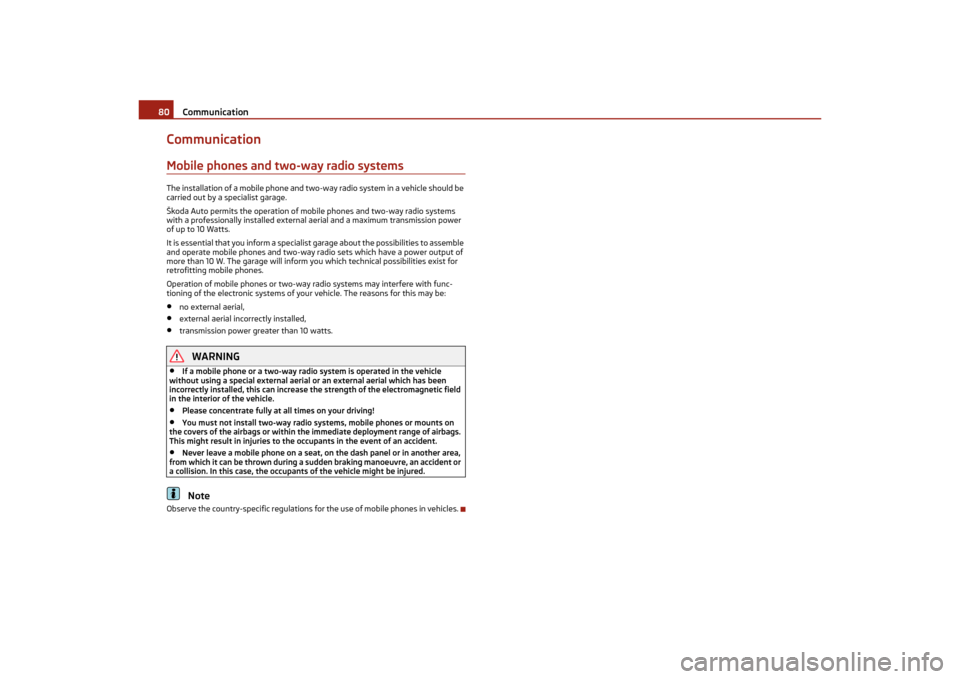
Communication
80
CommunicationMobile phones and two-way radio systemsThe installation of a mobile phone and two- way radio system in a vehicle should be
carried out by a specialist garage.
Škoda Auto permits the operation of mobile phones and two-way radio systems
with a professionally instal led external aerial and a maximum transmission power
of up to 10 Watts.
It is essential that you inform a specialist garage about the possibilities to assemble
and operate mobile phones and two-way ra dio sets which have a power output of
more than 10 W. The garage will inform you which technical possibilities exist for
retrofitting mobile phones.
Operation of mobile phones or two-way radio systems may interfere with func-
tioning of the electronic systems of your vehicle. The reasons for this may be:•
no external aerial,
•
external aerial in correctly installed,
•
transmission power greater than 10 watts.
WARNING
•
If a mobile phone or a two-way radio system is operated in the vehicle
without using a special external aerial or an external aerial which has been
incorrectly installed, this can increase the strength of the electromagnetic field
in the interior of the vehicle.
•
Please concentrate fully at all times on your driving!
•
You must not install two-way radio systems, mobile phones or mounts on
the covers of the airbags or within the immediate deployment range of airbags.
This might result in injuries to the occupants in the event of an accident.
•
Never leave a mobile phone on a seat, on the dash panel or in another area,
from which it can be thrown during a su dden braking manoeuvre, an accident or
a collision. In this case, the occup ants of the vehicle might be injured.Note
Observe the country-specific regulations for the use of mobile phones in vehicles.s2lk.2.book Page 80 Monday, April 18, 2011 7:41 AM
Page 82 of 183

Passive Safety81
Using the system
Safety
Driving Tips
General Maintenance
Breakdown assistance
Technical Data
SafetyPassive SafetyBasic informationDriving the safe way
Passive safety measures reduce the risk of injury in accident situa-
tions.In this section you will find important information, tips and notes on the subject of
passive safety in your vehicle. We have combined everything here which you should
be familiar with, for example, regarding seat belts, airbags, child seats and safety of
children. It is therefore important, in particular, to comply with the notes and warn-
ings in this section for your own interest and in the interest of those travelling with
you.
WARNING
•
This chapter contains important information on how to use the vehicle for
the driver and his occupants. You will find further information on safety, which
concerns you and those travelling with yo u, in the following chapters of this
Owner's Manual.
•
The complete on-board literature shou ld always be in the vehicle. This
applies in particular, if you rent out or sell the vehicle.
Safety equipment
The safety equipment is part of th e occupant protection and it can
reduce the risk of injuries in accident situations.“Do not put at risk” your safety and the safe ty of those travelling with you . In the
event of an accident, the safety equipment can reduce the risk of injuries. The
following list contains part of th e safety equipment in your vehicle:•
Three-point seat belts for all the seats,
•
belt force limiter for front seats and outer rear seats*,
•
belt tensioner for front seats,
•
seat belt height adjuster for front seats,
•
front airbag for the driver and the front seat passenger*,
•
side airbags*,
•
head airbags*,
•
anchoring points for child seat using the “ISOFIX” system,
•
anchoring points for child seat using the “Top Tether” system,
•
head restraint adjustable for height,
•
adjustable steering column.
The specified safety equipment works toge ther, in order to optimally protect you
and those travelling with yo u in accident situations. The safety equipment does not
protect you or the people travelling with you, if you or your occupants adopt an
incorrect seated position or the equipment is not correctly adjusted or used.
For this reason you will be provided with information on why this equipment is very
important, how it protects you and the occupants, what should be observed when
using the equipment and how you and the peop le travelling with you can make full
use of the existing safety equipment. This Owner's Manual contains important
warning notes, which you and those travelli ng with you should pay attention to in
order to reduce a risk of injury.
Safety concerns everybody!
Before setting off
The driver is always fully responsible for his occupants and for the
operating safety of the vehicle.For your own safety and the safety of the people travelling with you, please pay
attention to the following points before setting off:•
Ensure that the lighting and the turn signal system are functioning properly.
•
Inspect the tyre inflation pressure.
•
Ensure that all the windows offer a good visibility to the outside.
•
Safely attach the items of luggage page 53, “Loading the luggage compart-
ment”.
•
Ensure that no objects can obstruct the pedal.
•
Adjust the mirror, the front seat and the head restraint to match your body size.
s2lk.2.book Page 81 Monday, April 18, 2011 7:41 AM
Page 83 of 183
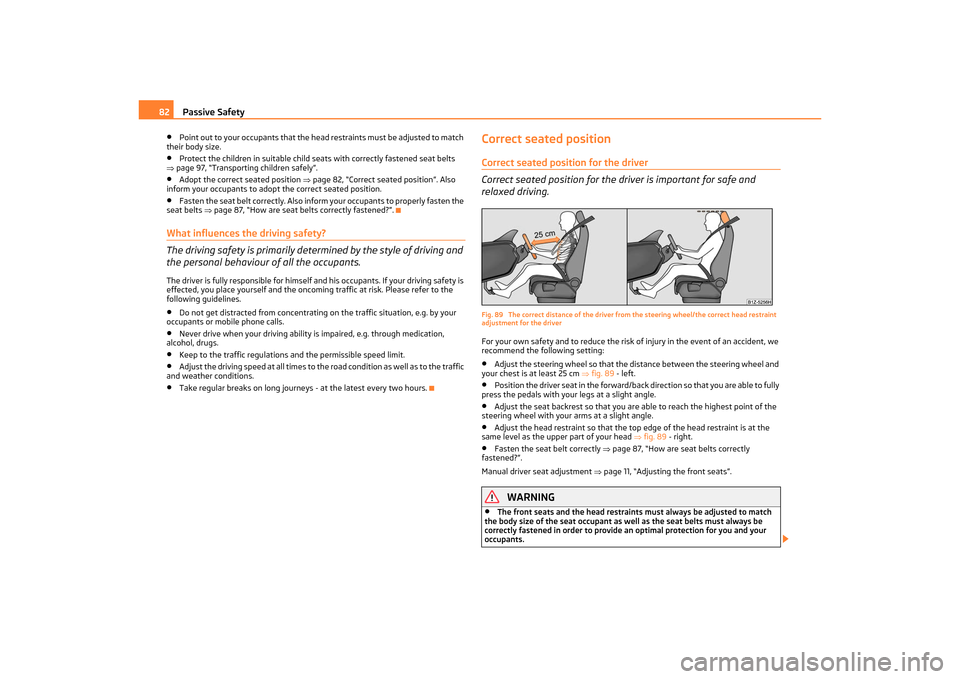
Passive Safety
82
•
Point out to your occupants that the head restraints must be adjusted to match
their body size.
•
Protect the children in suit able child seats with correctly fastened seat belts
page 97, “Transporting children safely”.
•
Adopt the correct seated position page 82, “Correct seated position”. Also
inform your occupants to adop t the correct seated position.
•
Fasten the seat belt correctly. Also inform your occupants to properly fasten the
seat belts page 87, “How are seat belts correctly fastened?”.
What influences the driving safety?
The driving safety is primarily determined by the style of driving and
the personal behaviour of all the occupants.The driver is fully responsible for himself and his occupants. If your driving safety is
effected, you place yourself and the oncoming traffic at risk. Please refer to the
following guidelines.•
Do not get distracted from concentrating on the traffic situation, e.g. by your
occupants or mobile phone calls.
•
Never drive when your driving ability is impaired, e.g. through medication,
alcohol, drugs.
•
Keep to the traffic regulations and the permissible speed limit.
•
Adjust the driving speed at all times to th e road condition as well as to the traffic
and weather conditions.
•
Take regular breaks on long journe ys - at the latest every two hours.
Correct seated positionCorrect seated position for the driver
Correct seated position for the driver is important for safe and
relaxed driving.Fig. 89 The correct distance of the driver fr om the steering wheel/the correct head restraint
adjustment for the driverFor your own safety and to reduce the risk of injury in the event of an accident, we
recommend the following setting:•
Adjust the steering wheel so that the distance between the steering wheel and
your chest is at least 25 cm fig. 89 - left.
•
Position the driver seat in the forward/back direction so that you are able to fully
press the pedals with your legs at a slight angle.
•
Adjust the seat backrest so that you ar e able to reach the highest point of the
steering wheel with your arms at a slight angle.
•
Adjust the head restraint so that the to p edge of the head restraint is at the
same level as the upper part of your head fig. 89 - right.
•
Fasten the seat belt correctly page 87, “How are seat belts correctly
fastened?”.
Manual driver seat adjustment page 11, “Adjusting the front seats”.
WARNING
•
The front seats and the head restraints must always be adjusted to match
the body size of the seat occupant as well as the seat belts must always be
correctly fastened in order to provide an optimal protection for you and your
occupants.
s2lk.2.book Page 82 Monday, April 18, 2011 7:41 AM
Page 84 of 183

Passive Safety83
Using the system
Safety
Driving Tips
General Maintenance
Breakdown assistance
Technical Data
•
The driver must maintain a distance of at least 25 cm to the steering wheel
page 82, fig. 89 - left. Not maintaining this minimum distance will mean that
the airbag system will not be able to properly protect you - hazard!
•
When driving, hold the steering wheel with both hands firmly on the outer
edge in the 9 o'clock and 3 o'clock positi on. Never hold the steering wheel firmly
in the 12 o'clock position or in another way (e.g. in the middle of the steering
wheel or at the inner steering wheel edge). In such cases, injuries to the arms,
the hands and the head can occur when the driver airbag is deployed.
•
The seat backrests must not be angled too far back when driving otherwise
this will affect proper operation of the se at belts and of the airbag system - risk
of injury!
•
Ensure that there are no objects in the footwell as any objects may get
behind the pedals during a driving or braking manoeuvre. You would then no
longer be able to operate the clutch, to brake or accelerate.
Correct seated position for the front passenger
The front passenger must maintain a distance of at least 25 cm from
the dash panel so that the airbag offers him the greatest possible
safety it is deployed.For the safety of the front passenger and to reduce the risk of injury in the event of
an accident, we recommend the following setting:•
Adjust the front passenger seat as far as possible to the rear.
•
Adjust the head restraint so that the top edge of the head restraint is at the
same level as the upper part of your head page 82, fig. 89 - right.
•
Fasten the seat belt correctly page 87, “How are seat belts correctly
fastened?”.
In exceptional cases the front passenger airbag can be deactivated page 95,
“Deactivating an airbag”.
Manual front passenger adjustment page 11, “Adjusting the front seats”.
WARNING
•
The front seats and the head restraints must always be adjusted to match
the body size of the seat occupant as well as the seat belts must always be
correctly fastened in order to provide an optimal protection for you and your
occupants.
•
The front passenger must maintain a distance of at least 25 cm to the dash
panel. Not maintaining this minimum dist ance will mean that the airbag system
will not be able to prop erly protect you - hazard!
•
Keep your feet in the footwell at all times while driving. Never place your feet
on the dash panel, out of the window or on the seats. You will be exposed to
increased risk of injury if it becomes ne cessary to apply the brake or in the event
of an accident. If an airbag is deployed, you may suffer fatal injuries when
adopting an incorrect seated position!
•
The seat backrests must not be angled too far back when driving otherwise
this will affect proper operation of the seat belts and of the airbag system - risk
of injury!
Correct seated position for the occupants on the rear seats
Occupants on the rear seats must sit upright, keep the feet in the
footwell and must have their seat belts correct ly fastened.To reduce the risk of injury in the event of a sudden braking manoeuvre or an acci-
dent, the occupants on the rear seats must observe the following:•
Adjust the head restraints so that the top edge of the head restraints is at the
same level as the upper part of your head page 82, fig. 89 - on the right.
•
Fasten the seat belt correctly page 87, “How are seat belts correctly
fastened?”.
•
If you are transporting page 97, “Transporting children safely” children in the
vehicle, please use a suitable child restraint system.
WARNING
•
The head restraints must always be adju sted to match the body size, in order
to offer an optimal protection for you and your occupants.
•
Keep your feet in the footwell at all times while driving. Never place your feet
out of the window or on the seats. You will be exposed to increased risk of injury
if it becomes necessary to apply the brak e or in the event of an accident. If an
airbag is deployed, you may suffer fata l injuries when adopting an incorrect
seated position!
•
If the occupants on the rear seats are not sitting upright, the risk of injury is
increased due to incorrect routing of the seat belt.
WARNING (continued)
WARNING (continued)
s2lk.2.book Page 83 Monday, April 18, 2011 7:41 AM
Page 85 of 183
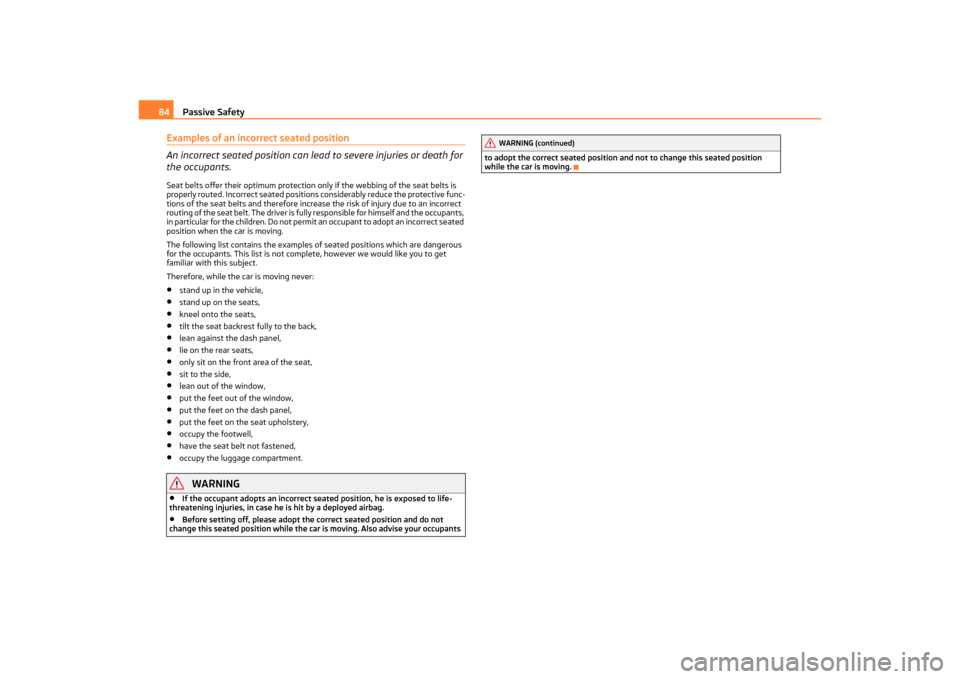
Passive Safety
84
Examples of an incorrect seated position
An incorrect seated posi tion can lead to severe injuries or death for
the occupants.Seat belts offer their optimum protection on ly if the webbing of the seat belts is
properly routed. Incorrect seated positions considerably reduce the protective func-
tions of the seat belts and therefore increase the risk of injury due to an incorrect
routing of the seat belt. The driver is fully responsible for himself and the occupants,
in particular for the children. Do not permit an occupant to adopt an incorrect seated
position when the car is moving.
The following list contains the examples of seated positions which are dangerous
for the occupants. This list is not complete, however we would like you to get
familiar with this subject.
Therefore, while the car is moving never:•
stand up in the vehicle,
•
stand up on the seats,
•
kneel onto the seats,
•
tilt the seat backrest fully to the back,
•
lean against the dash panel,
•
lie on the rear seats,
•
only sit on the front area of the seat,
•
sit to the side,
•
lean out of the window,
•
put the feet out of the window,
•
put the feet on the dash panel,
•
put the feet on the seat upholstery,
•
occupy the footwell,
•
have the seat belt not fastened,
•
occupy the luggage compartment.
WARNING
•
If the occupant adopts an incorrect seat ed position, he is exposed to life-
threatening injuries, in case he is hit by a deployed airbag.
•
Before setting off, please adopt the correct seated position and do not
change this seated position while the car is moving. Also advise your occupants to adopt the correct seated
position and not to change this seated position
while the car is moving.
WARNING (continued)
s2lk.2.book Page 84 Monday, April 18, 2011 7:41 AM
Page 86 of 183

Seat belts85
Using the system
Safety
Driving Tips
General Maintenance
Breakdown assistance
Technical Data
Seat beltsWhy seat belts?It is a proven fact that seat belt s offer good protection in accidents fig. 90. Thus
wearing a seat belt is a legal requirement in most countries.
Seat belts which have been correctly fast ened and adjusted hold the occupants of
the car in the correct seated position fig. 90. The seat belts reduce the kinetic
energy (energy of motion) to a considerable extent. They also prevent uncontrolled
movements which, in turn, may we ll result in severe injuries.
The occupants of a vehicle who have fastened and correctly adjusted their seat belt,
profit to a major extent from the fact that the kinetic energy is optimally absorbed
by the belts. The structure of the front end of the vehicle and other passive safety
measures, such as the airbag system, also contribute to reducing the kinetic energy.
The energy produced is thus absorbed and there is less risk of injury.
Accident statistics prove that seat belts which are fastened and properly adjusted
reduce the risk of an injury and enhance th e chance of survival in a major accident
page 85.
It is important that you pay attention to safety measures, particularly when trans-
porting children in the vehicle page 97, “What you should know about trans-
porting children!”.
WARNING
•
F a s t e n y o u r s e a t b e l t e a c h t i m e b e f o r e s e t t i n g o f f , a l s o w h e n d r i v i n g i n t o w n !
This also applies to the people seat ed at the rear - risk of injury!
•
Expectant women must also always wear a seat belt. This is the only way of
ensuring optimal protection for the unborn child page 87.
•
It i s i m po rta n t f or th e b el t we bb in g to be p rop er ly rou te d i f th e s ea t be lts a re
to offer the maximum protection. You can see a description of how safety belts
should be fitted properly on the next pages.Note
Please comply with any differing legal requirements when using the seat belts.The physical principle of a frontal collisionFig. 91 The driver is thrown forward if not we aring a belt/the rear seat occupant is thrown
forward if not wearing a beltThe physical principle of a frontal accident can be explained quite simply:
Motion energy, so-called kinetic energy, is produced as soon as the vehicle is
moving, both for the vehicle and its occupants. The magnitude of this kinetic energy
depends essentially on the speed at which the vehicle is travelling and on the
weight of the vehicle and the occupants. The greater the speed and weight
increase, the greater the amount of energy which has to be absorbed in the event
of an accident.
The speed of the vehicle is, nevertheless, the most important factor. Doubling the
speed of the vehicle from 25 km/h up to 50 km/hour increases the kinetic energy
four times.
Fig. 90 Driver wearing seat belt
WARNING (continued)
s2lk.2.book Page 85 Monday, April 18, 2011 7:41 AM
Page 87 of 183

Seat belts
86
T h e c o m m o n o p i n i o n t h a t i t i s p o s s i b l e t o s u p p o r t y o u r b o d y i n a m i n o r a c c i d e n t w i t h
your hands, is incorrect. Even in a collision at only a low speed, the forces acting on
the body are such that it is no longer possible to support your body.
Even if you only drive at a speed within the range from 30 km/hour to 50 km/hour,
the forces which are produced on your body in the event of an accident can easily
exceed 10.000 N (Newton). This equals a weight of one tonne (1 000 kg).
In the event of a frontal collision, occupa nts of the vehicle not wearing a seat belt,
are thrown forward and strike in an uncont rolled way parts of the interior of the
vehicle, such as steering wheel, dash panel, windscreen, page 85, fig. 91 - left.
The occupants of a vehicle who have not fastened their seat belts may even be
thrown out of the vehicle. This can result in fatal injuries.
It is also important that rear seat occupa nts fasten their seat belts as they will
otherwise be thrown through the vehicle in an uncontrolled manner in the event of
an accident A rear seat pa ssenger who has not fastened the seat belt is a danger
not only to himself but also for those seated at the front page 85, fig. 91 - right.Important safety information regarding the use of seat beltsThe correct use of the seat belts considerably reduces the risk of
injury!
WARNING
•
The belt webbing must not be jammed in -between at any point or twisted,
or chafe against any sharp edges.
•
It is important that the belt webbing is properly routed if the seat belts are
to offer their maximum protection page 87.
•
No two persons (also not children) should ever use a single seat belt
together.
•
The maximum protection which seat belts can offer is only achieved if you
are correctly seated page 82, “Correct seated position”.
•
The belt webbing must not run across so lid or fragile objects (e.g. spectacles,
ball-point pens, keys etc.) as th is may be a cause of injuries.
•
Bulky, loose clothing (e.g. a winter coat over a jacket) does not allow you to
be correctly seated and impairs pr oper operation of the seat belts.
•
It is prohibited to use clamps or othe r objects to adjust seat belts (e.g. for
shortening the belts for smaller persons).
•
The lock tongue should only be inserted into the lock which is the correct one
for your seat. Wrong use of the safety belt will reduce its capacity to protect and
the risk of injury increases.
•
The seat backrests of the front seats must not be tilted too far to the rear
otherwise the seatbelts can lose their effectiveness.
•
The belt webbing must always be kept clean. A soiled belt webbing may
impair proper operation of the inertia reel page 126, “Seat belts”.
•
The slot of the belt tongue must not be blocked by paper or similar objects
otherwise the belt tongue will not lock in place properly.
•
Inspect the seat belts regularly to ensure they are in good condition. If you
find seat belts which have damage to th e seat belt webbing, seat belt connec-
tions, to the inertia reels or to the lock, t h e r e l e v a n t s a f e t y b e l t m u s t b e r e p l a c e d
by a specialist garage.
•
The seat belts must not be removed or changed in any way. Do not make an
attempt to repair the seat belts yourself.
•
Damaged seat belts which have been subjected to stress in an accident and
were therefore stretched, must be replaced - this is best done by a specialist
garage. The anchorage points of the belts must also be inspected. The
anchorage points for the belts should also be checked.
•
In certain countries it is possible to use seat belts which differ in terms of
their operation from the seat belts wh ich are described on the pages which
follow.WARNING (continued)
s2lk.2.book Page 86 Monday, April 18, 2011 7:41 AM
Page 88 of 183

Seat belts87
Using the system
Safety
Driving Tips
General Maintenance
Breakdown assistance
Technical Data
How are seat belts correctly fastened?Fastening three-point seat belts
Fasten your seat belt before starting!Fig. 92 Routing of webbing over the shoulders and the lap belt– Correctly adjust the front seat and the he ad restraint before fastening your seat
belt page 50.
– Slowly pull the belt webbing at the tongue of the lock over your chest and pelvis .
– Insert the tongue of the lock into the seat belt buckle belonging to the seat until it is heard to lock in place.
– Pull on the seat belt to check that it has also reliably engaged in the lock.
Each three-point seat belt is equipped with an inertia reel. This inertia reel offers
you complete freedom of movement if the belt is unreeled slowly. If the brakes are
applied suddenly, the inertia reel will block. It also blocks the seat belts when the
car accelerates, when driving uphill and when cornering.
Expectant mothers must also wear seat belts .
WARNING
•
The shoulder part of the seat belt must never run across your neck but must
run approximately over the middle of th e shoulder and fit snugly against the
chest. The lap part of the belt must run across the hip and must never be routed
across the stomach. It must always fit snugly page 87, fig. 92 - left. Adjust the
belt webbing as required.
•
The lap part of the belt should be positi oned as low as possible at the pelvis
of an expectant mother in order to avoid exerting any pressure on the lower
abdomen page 87, fig. 92 - right.
•
Always ensure that the webbing of the seat belts is properly routed. Seat
belts which are not correctly adjusted c an themselves cause injuries even in
minor accidents.
•
A seat belt which is hanging too loose can result in injuries as your body is
moved forward by the kinetic energy pr oduced in an accident and is then
suddenly held firm by the belt.
•
Only insert the lock tongue into the lock which is the correct one for your
seat. This will affect the protection which th e b el t of f ers a n d i n c rea s e th e ri sk of
an injury.
Seat belt height adjusterThe seat belt height adjuster makes it po ssible for you to adapt the routing of the
three-point seat belt in the area of the shoulder to match your body size.
– Move the height adjuster in the desired direction up or down fig. 93 .
– Then pull firmly on the belt to ensure that the seat belt height adjuster has correctly locked in place.
WARNING
Adjust the height of the belt in such a wa y that the shoulder part of the belt is
positioned approximately ac ross the middle of your shoulder - on no account
across your neck.
WARNING (continued)
Fig. 93 Front seat: Seat belt height
adjuster
s2lk.2.book Page 87 Monday, April 18, 2011 7:41 AM
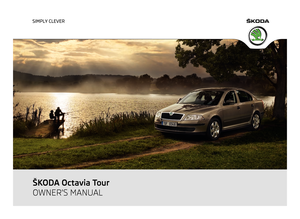 1
1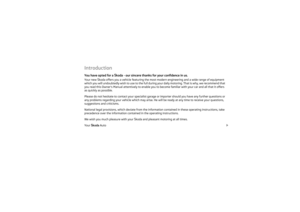 2
2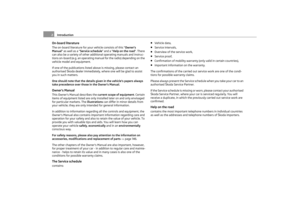 3
3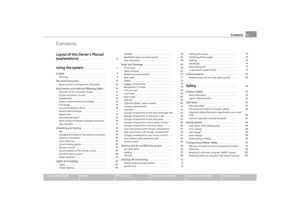 4
4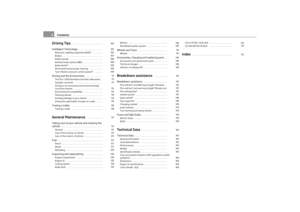 5
5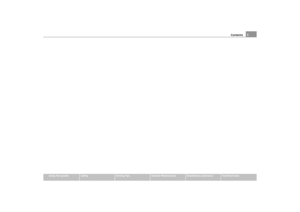 6
6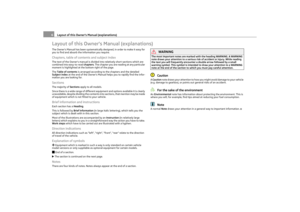 7
7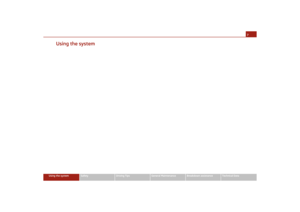 8
8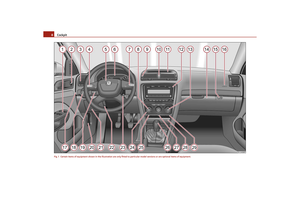 9
9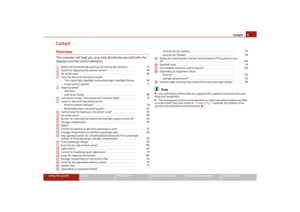 10
10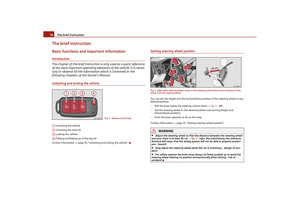 11
11 12
12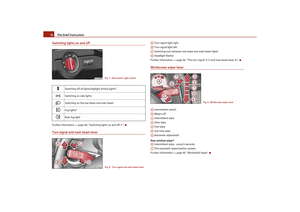 13
13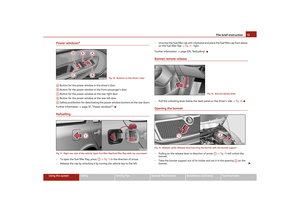 14
14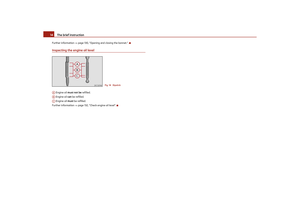 15
15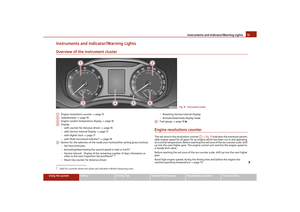 16
16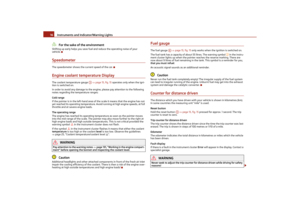 17
17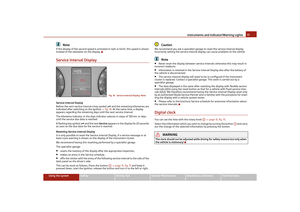 18
18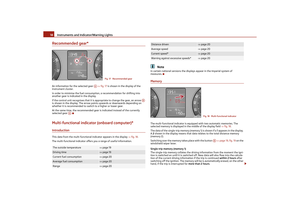 19
19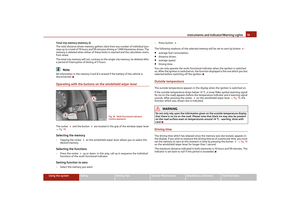 20
20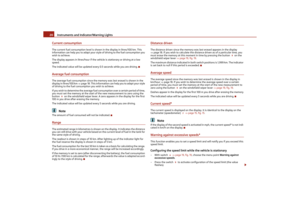 21
21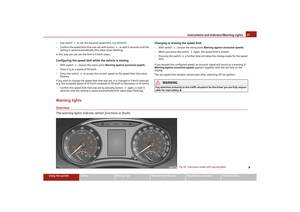 22
22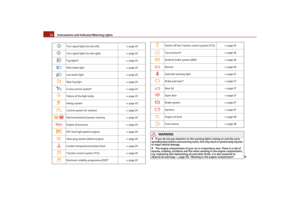 23
23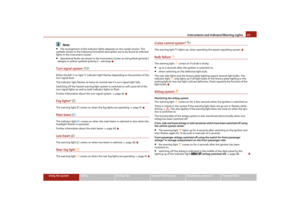 24
24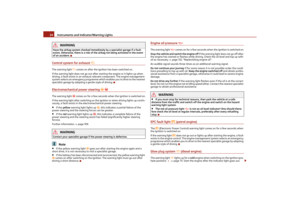 25
25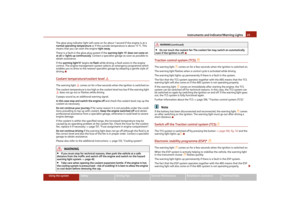 26
26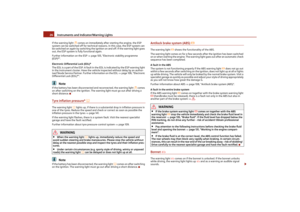 27
27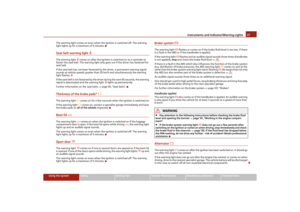 28
28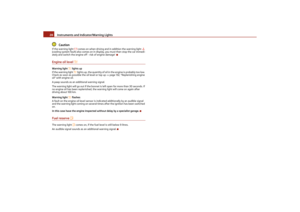 29
29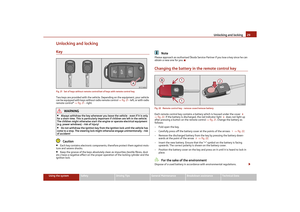 30
30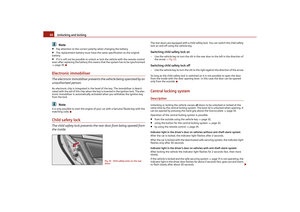 31
31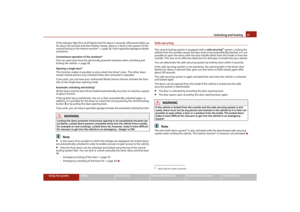 32
32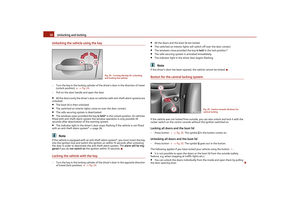 33
33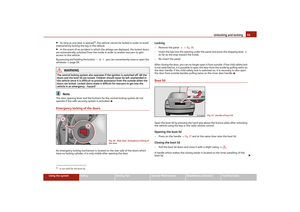 34
34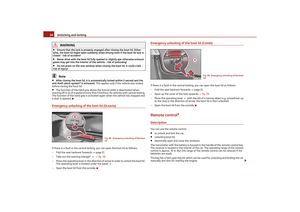 35
35 36
36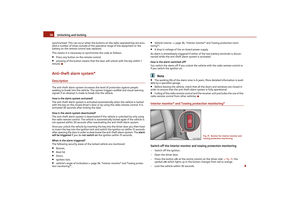 37
37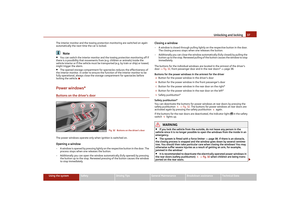 38
38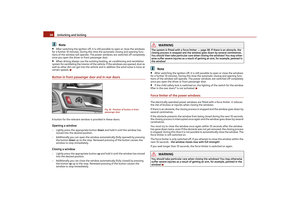 39
39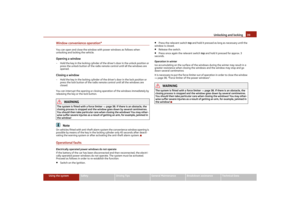 40
40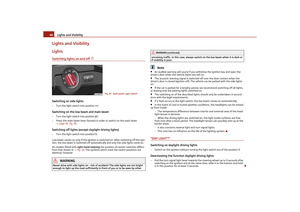 41
41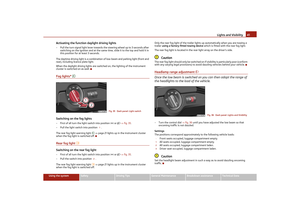 42
42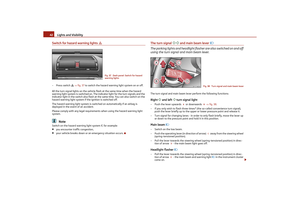 43
43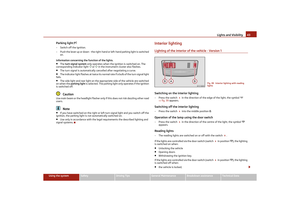 44
44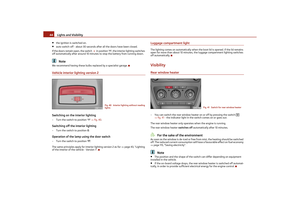 45
45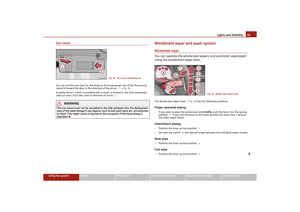 46
46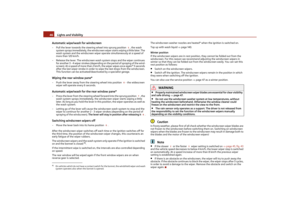 47
47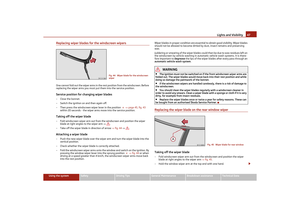 48
48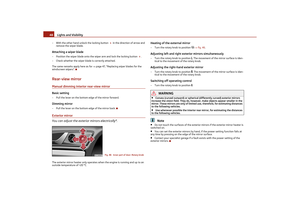 49
49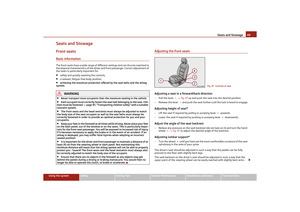 50
50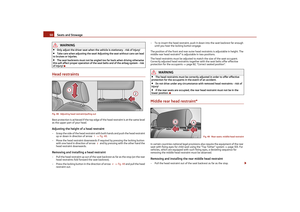 51
51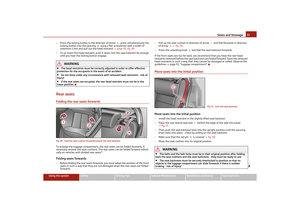 52
52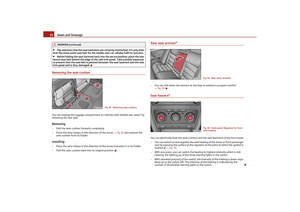 53
53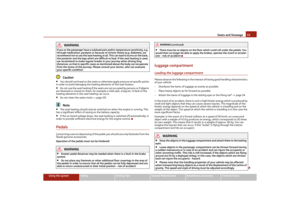 54
54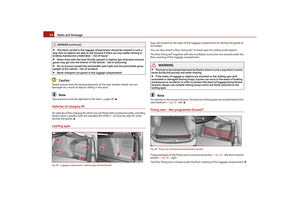 55
55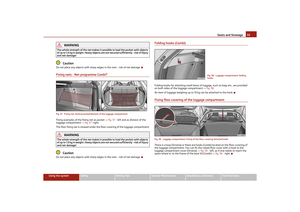 56
56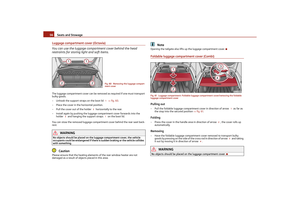 57
57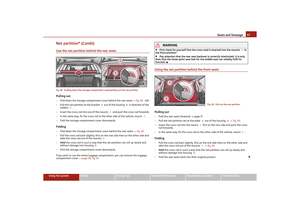 58
58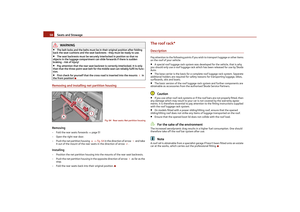 59
59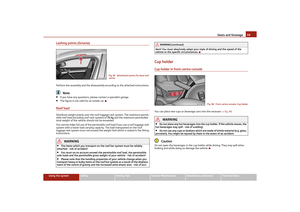 60
60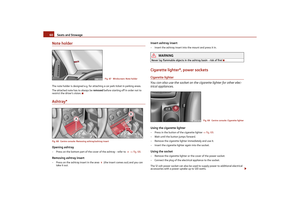 61
61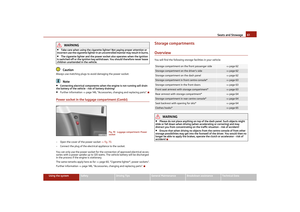 62
62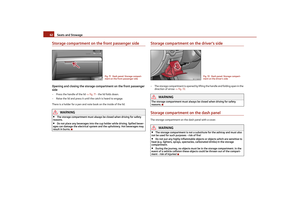 63
63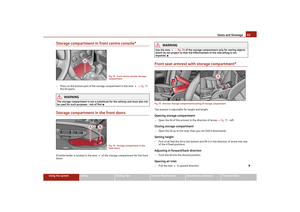 64
64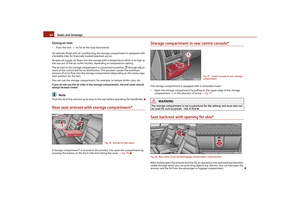 65
65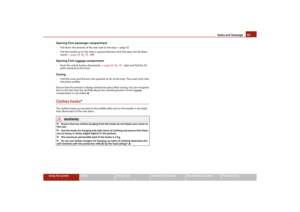 66
66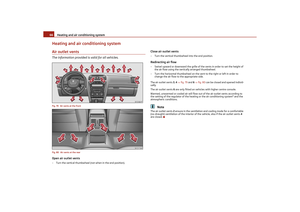 67
67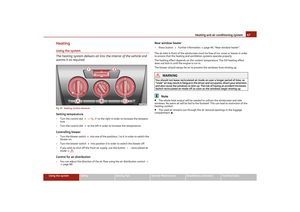 68
68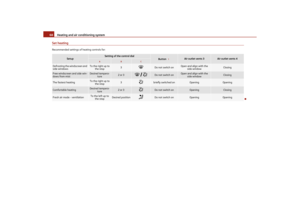 69
69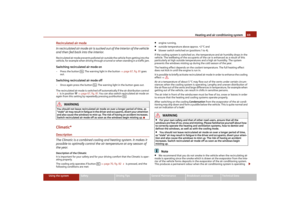 70
70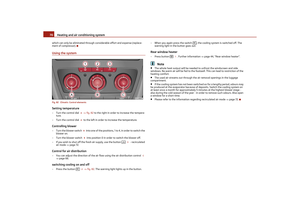 71
71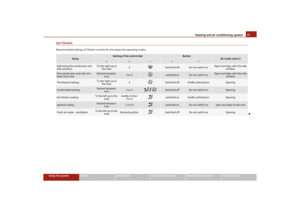 72
72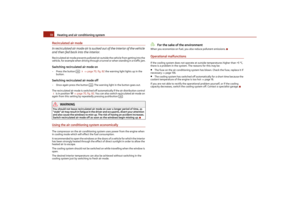 73
73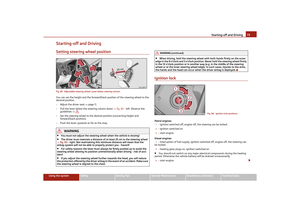 74
74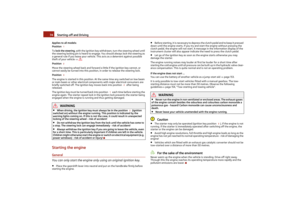 75
75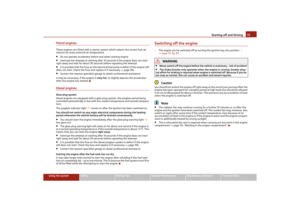 76
76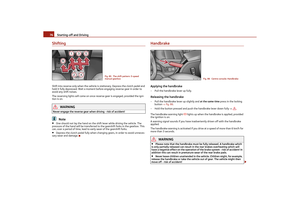 77
77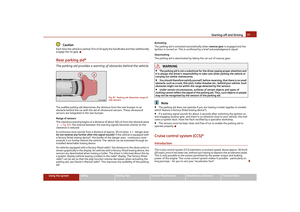 78
78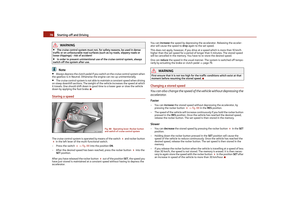 79
79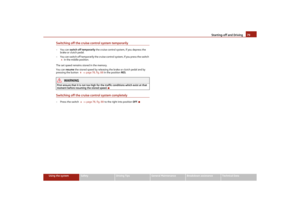 80
80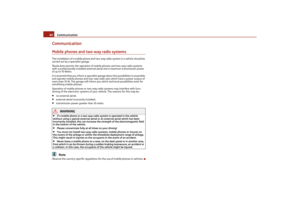 81
81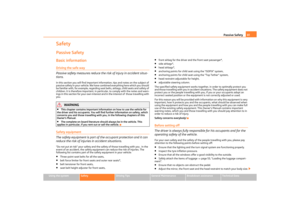 82
82 83
83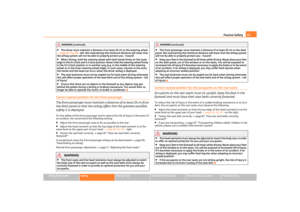 84
84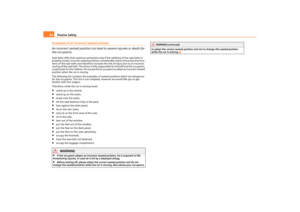 85
85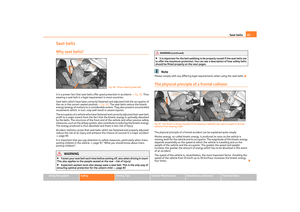 86
86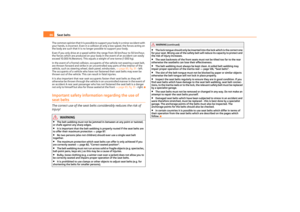 87
87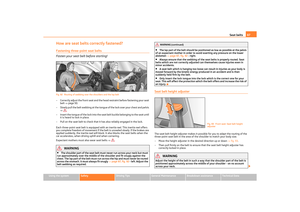 88
88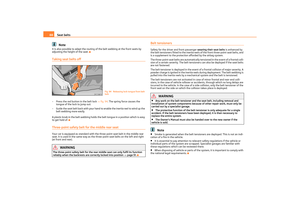 89
89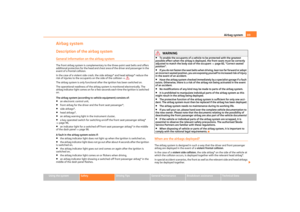 90
90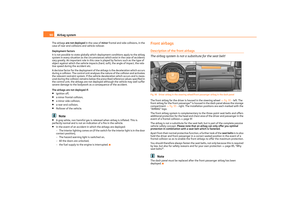 91
91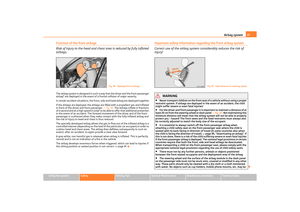 92
92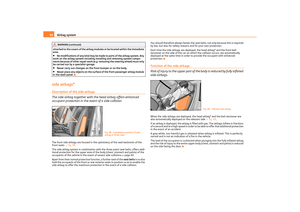 93
93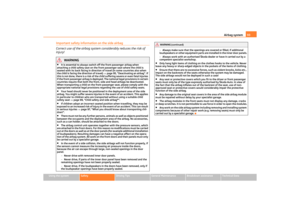 94
94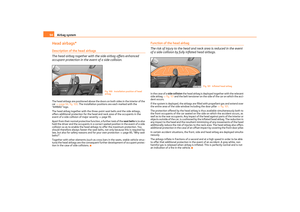 95
95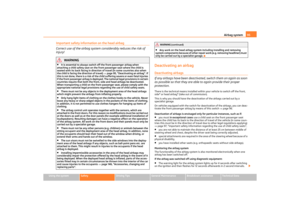 96
96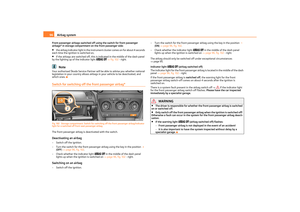 97
97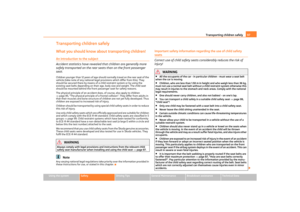 98
98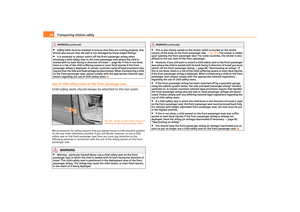 99
99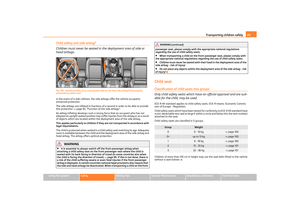 100
100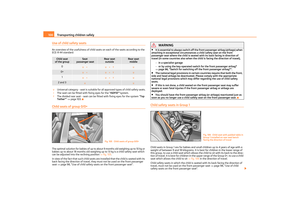 101
101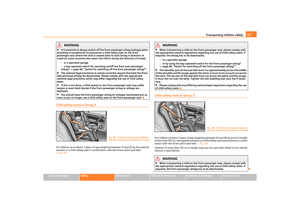 102
102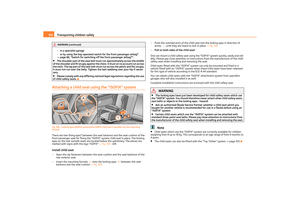 103
103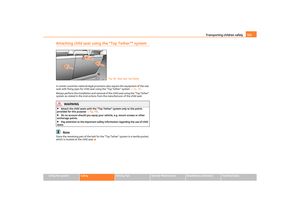 104
104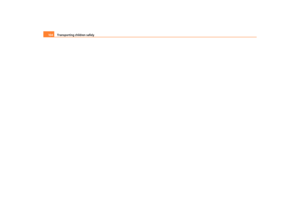 105
105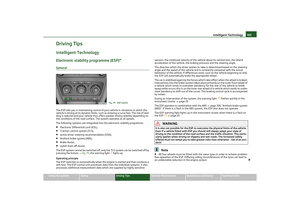 106
106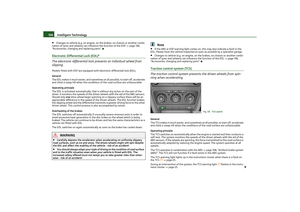 107
107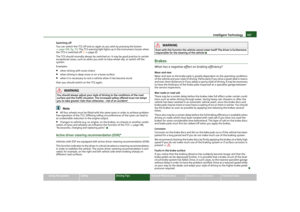 108
108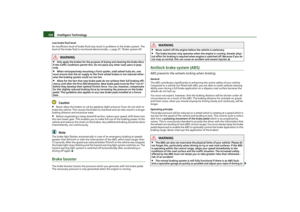 109
109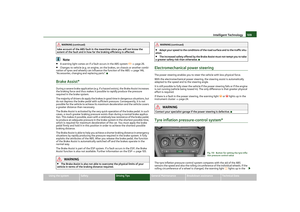 110
110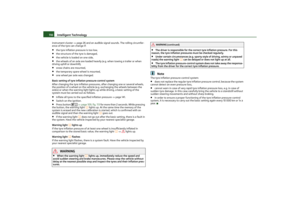 111
111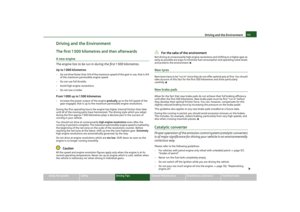 112
112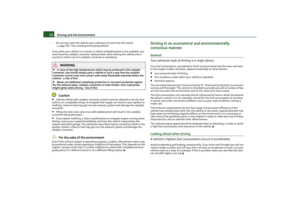 113
113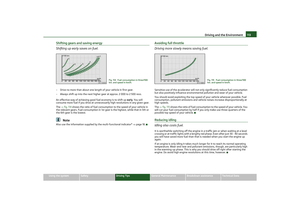 114
114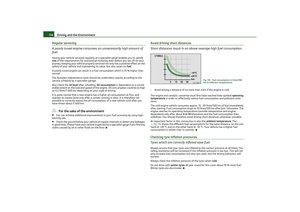 115
115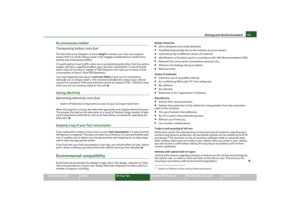 116
116 117
117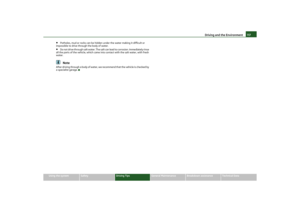 118
118 119
119 120
120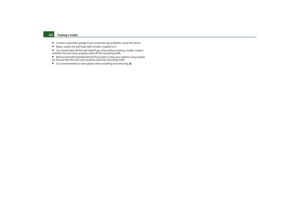 121
121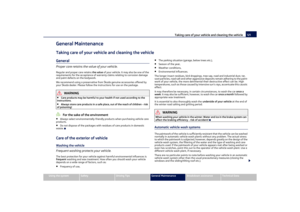 122
122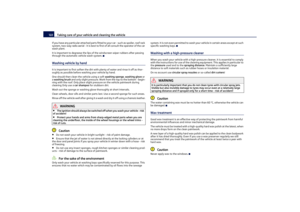 123
123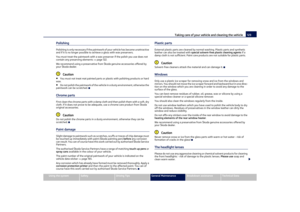 124
124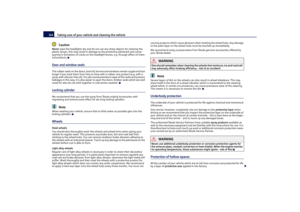 125
125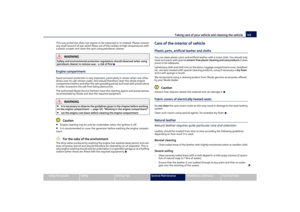 126
126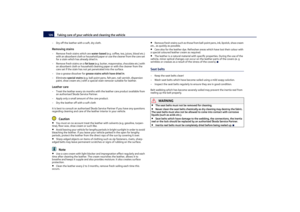 127
127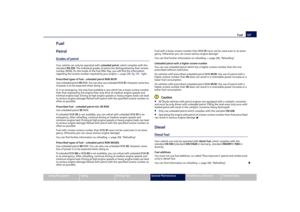 128
128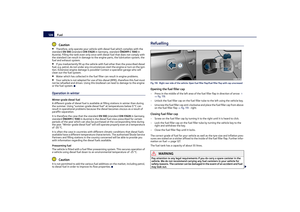 129
129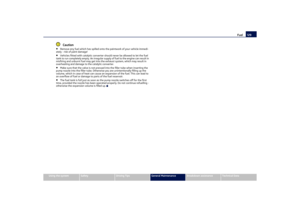 130
130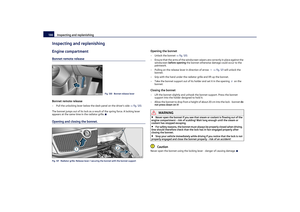 131
131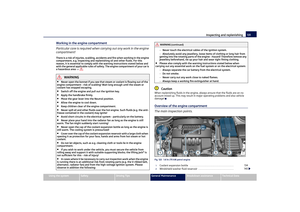 132
132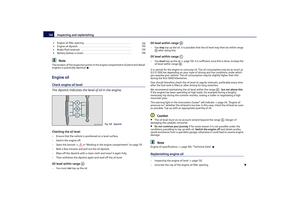 133
133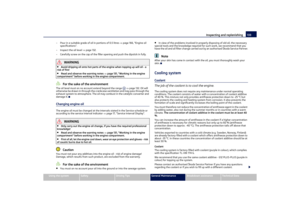 134
134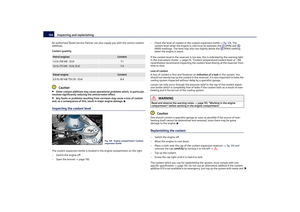 135
135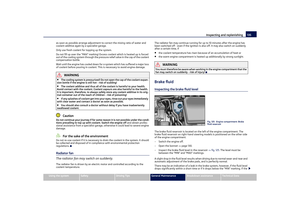 136
136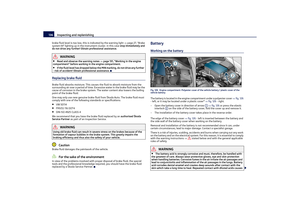 137
137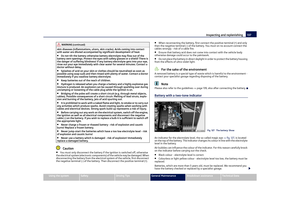 138
138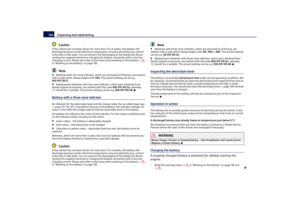 139
139 140
140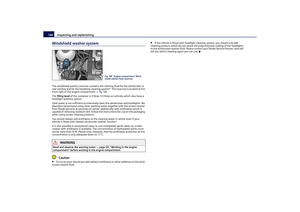 141
141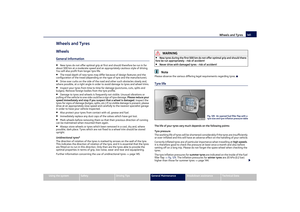 142
142 143
143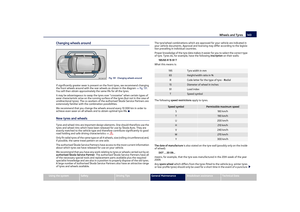 144
144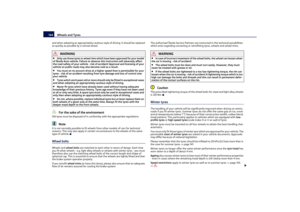 145
145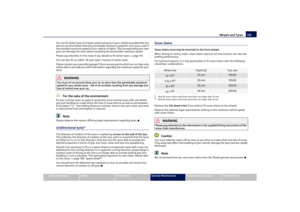 146
146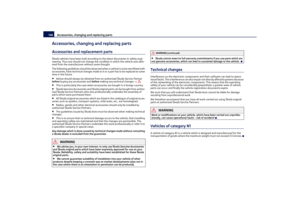 147
147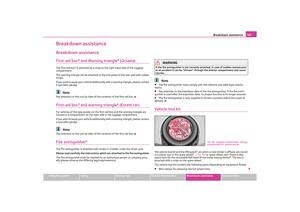 148
148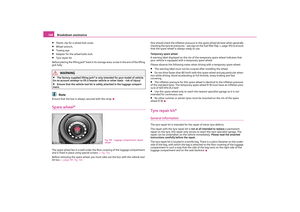 149
149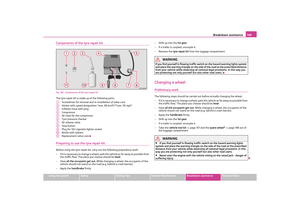 150
150 151
151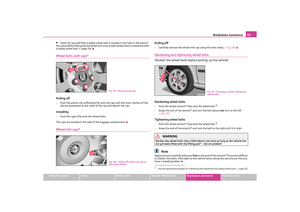 152
152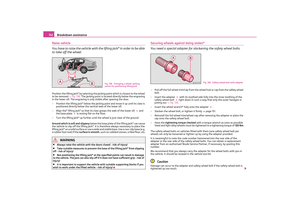 153
153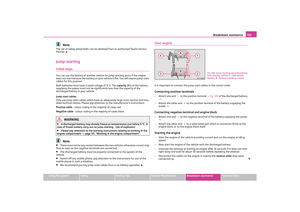 154
154 155
155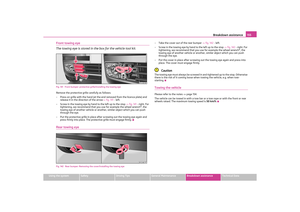 156
156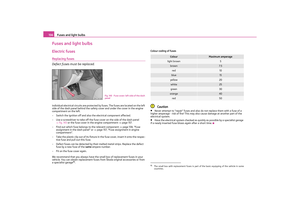 157
157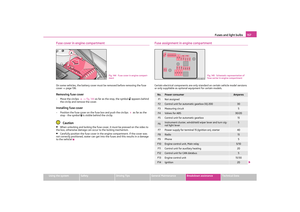 158
158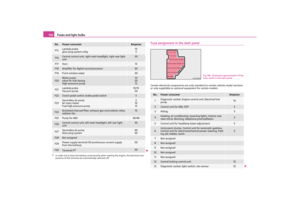 159
159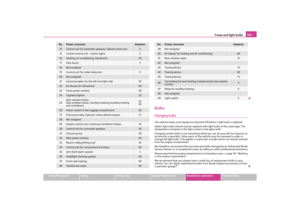 160
160 161
161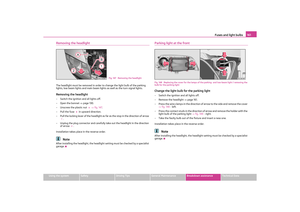 162
162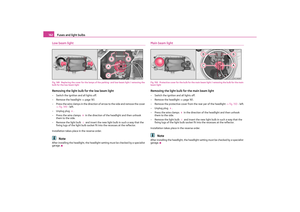 163
163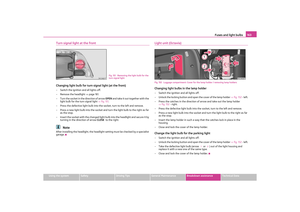 164
164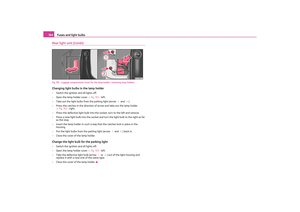 165
165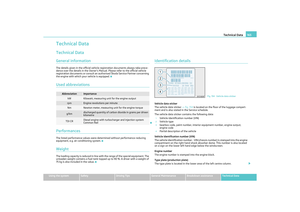 166
166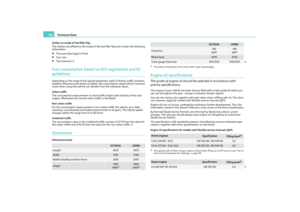 167
167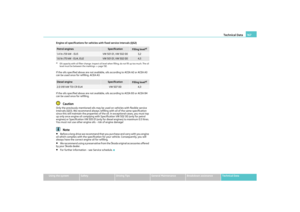 168
168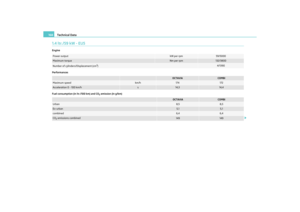 169
169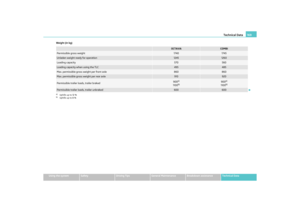 170
170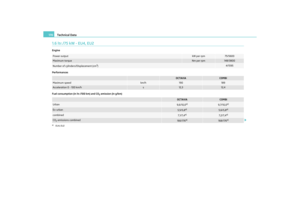 171
171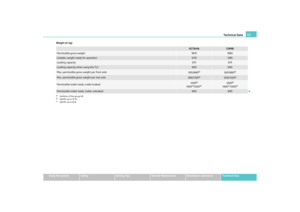 172
172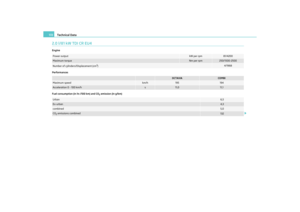 173
173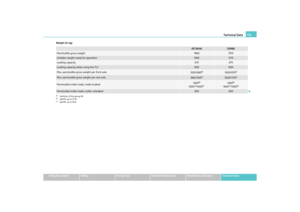 174
174 175
175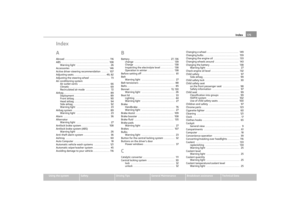 176
176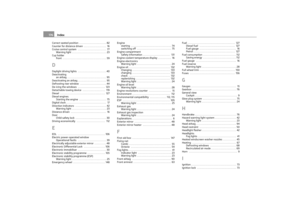 177
177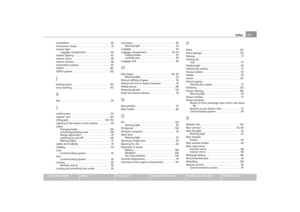 178
178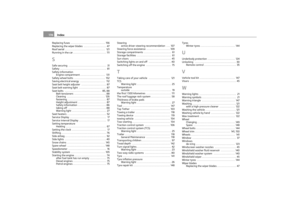 179
179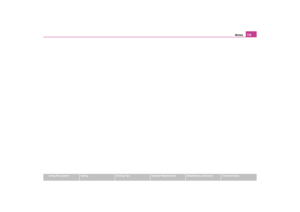 180
180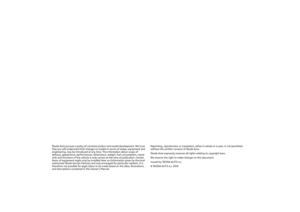 181
181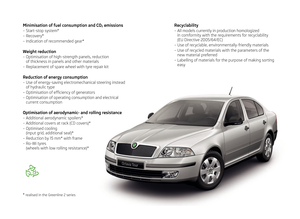 182
182






